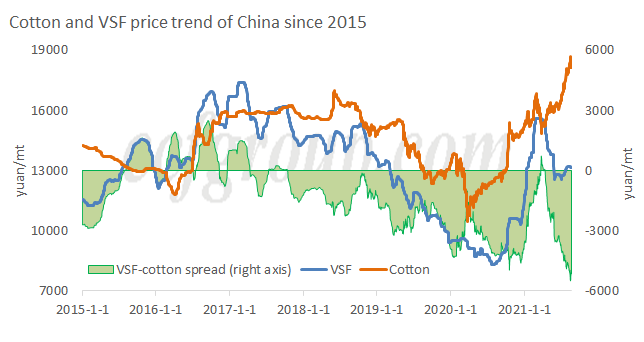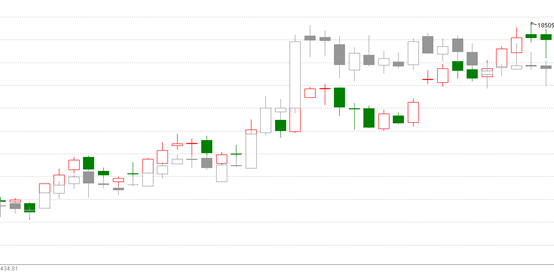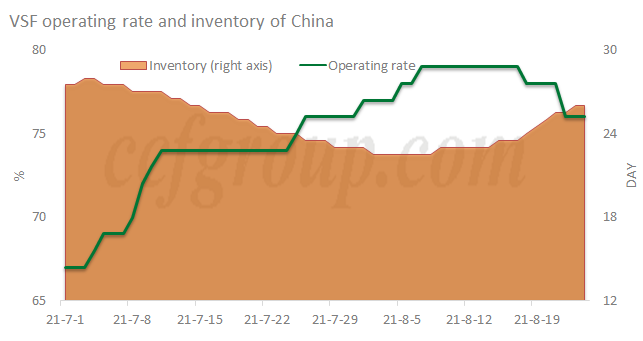How to treat low price of VSF?
Cotton price has been increasing since the end of Jun as ZCE cotton futures has soared from 15,000yuan/mt to 18,500yuan/mt, gaining ground by 3,500yuan/mt in less than two months and the uptrend seems to sustain.
As for VSF, the performance is not eye-catching despite rising price amid minor increase of sales in early Jul. However, the market fails to keep strong after Zhengzhou was hit by heavy rain and the COVID-19 was spreading in Nanjing at the end of Jul. Sales seemed to slow down since then and the price failed to exceed 13,200yuan/mt.
As cellulose staple fiber, VSF is indeed lower than cotton that has been hiking. The price gap has reached the peak without policy intervention and seems to widen further.

Compared with historical trends, there is deviation between VSF and cotton recently. As cotton textile raw materials, why is there different direction for cotton and VSF. That’s because the upward momentum of cotton does not come from demand. Although cotton textiles enjoy good sales this year, the recent price rise does have much to do with demand, which can be seen from cotton yarn futures trend. When ZCE cotton futures is hiking lately, cotton yarn futures fails to follow up and even shows signs of weakening. It is apparently caused by unfavorable demand and difficulty in transferring the increase of raw materials.

Now that demand is not the cause, the price trend of the two largely depends on the respective supply. After VSF slightly rebounded in Jul, the operating rate quickly got close to 80% from less than 70%. Coupled with huge stockpiles, the overall supply is abundant. As for cotton, due to the expected production reduction of 2021/22 crop year and increased expectation of competition for seed cotton procurement, the supply is anticipated to be tight. Together with the surge in financial market, cotton has witnessed rapid rise. This makes it easy to understand the different trends of the two products.
Returning to VSF itself, how to treat the relatively low price at present? For any company, it is a common desire to achieve better price and pursue higher profit. But for the current environment of VSF, price is not the top priority. In 2018, there was a peak of VSF capacity expansion by more than 1 million tons/yr. However, market demand failed to follow up effectively after new capacities were launched. Especially after the COVID-19 emerged in 2020, the preference for rayon products has declined further due to uncertain reasons. It is reflected in yarn and fabric as the profit of rayon yarn and fabric is much lower than that of cotton, polyester and other blended products.
Although VSF price has slightly rebounded since Jul, rayon yarn operating rate drops instead of rising and VSF inventory does not decline notably. All those signs show that how to expand demand is the first issue to consider by VSF companies.
A realistic problem is that, considering the impact of sea freight, the peak season of this year seems to start earlier. During the price rebound in Jul-Aug, the physical inventory of VSF industry dropped from 28 days to 22.5 days and rebounded to 26 days recently. If there is limited effect of destocking during the peak season, how to survive the long winter in the traditional slack season after Oct is the issue that VSF plants has to face ahead of time.

Another problem is operating rate. The current run rate of 76% is slightly higher than the average level since 2020, but Shandong Xinlong’s line 2 and Funing Aoyang’s facility are likely to come on stream in short-to-medium term and there are no clear maintenance schedules announced by VSF companies, so the supply will increase further.
Considering the impact of sea freight, the quantity of foreign orders may not be optimistic and peak season may end earlier than past years. According to economic data in past few months, the demand in China local market is hard to be favorable. So there may be uncertain negative impact on the limited market demand if blindly pursuing high prices.
Of course, the actual market demand cannot be interpreted by a simple price curve and price leverage is even invalid during some periods. It is normal to see“buy on the upswing, and sell on the downswing”in bulk feedstock market. But price leverage is still effective in a longer period. High-quality and low-cost products are more likely to be recognized by consumers.
The value of VSF industry should be providing high-quality and sustainable fiber materials and clothing, rather than chasing price fluctuations. Therefore, there is no need to over-interpret the current low price. Although VSF companies have spared no effort in enhancing product image in recent years, according to our sample survey on consumption, for non-viscose industry participants, there is much less understanding of VSF versus other competing fibers.
How to compete for more reasonable market share from the consumption fields of other fibers is still the primary task of VSF industry. As a fiber with low consumer recognition, keeping a low profile and constantly cultivating demand by providing better cost performance is obviously a decision with strategic value. In this regard, we may refer to the development of electric vehicles. During the development process, we have seen that some leading brands do not pursue brand premiums too much, but continued to actively reduce prices to expand market share. When the demand is fully cultivated, the pursuit of higher premium products in the future may be a matter of course.
- Top keywords
- Cotton Price
- Cotton Futures Price
- Cotton Futures
- CZCE
- PTA Futures Price
- Chemical Fiber
- Polyester Prices
- Wool price
- PTA Futures
- Shengze Silk
- China
- Yarn Price
- price
- China Textile City
- Fibre Price
- Benzene Price
- Cotton
- Index
- Cotton Index
- PTA
- fabric price
- NYMEX
- Top 10
- textile industry
- Spot Cotton
- Cotton Yarn
- Polyester Price
- Futures
- PTA Price
- cotton yarn price

